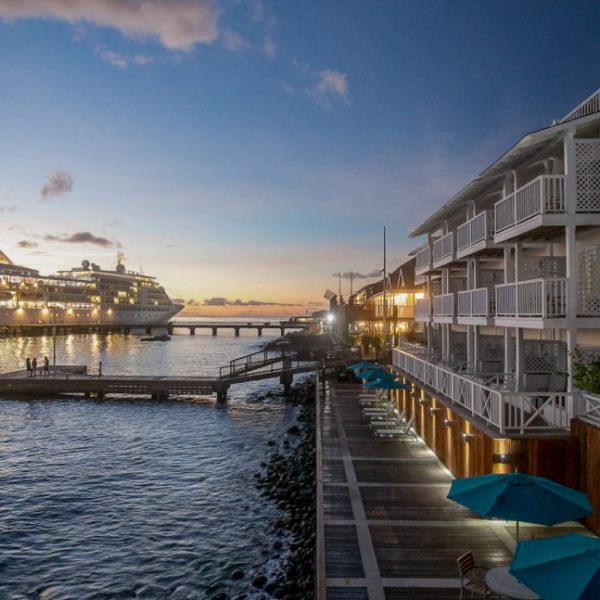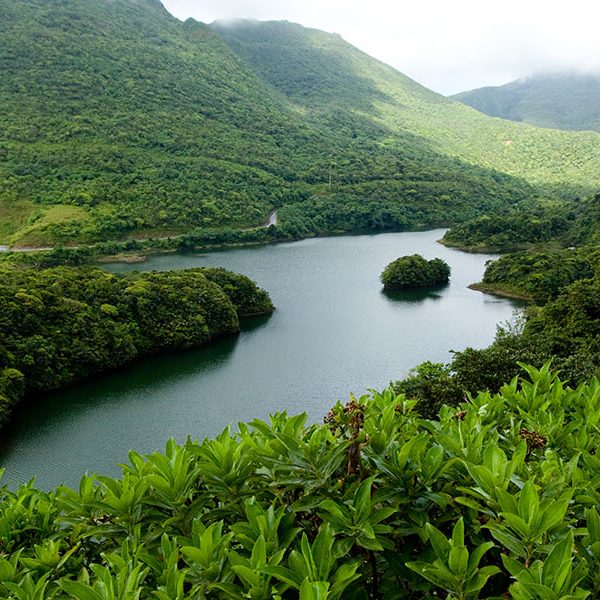Highly Rated

From
$
Sutton Place: Nestled in the heart of our capital's business center, steps away from our shops, banks, restaurants, and the new Bayfront Promenade, Sutton Place Hotel is on the pulse of the nature isle - perfect for the business and leisure traveler.

Dominica a unique Destination
Dominica is blessed with endless rivers, dormant volcanoes, and abundant wildlife. It is also renowned for its rich cultural tradition and the genuine hospitality of its people.
A safe setting with all the comfort of lovely hotels, eco lodges delicious cuisine, and exciting activities ranging from high-powered events to long sought-after relaxation, makes Dominica the perfect choice for your incentive programs.
History
Throughout its history the fertile island of Dominica has attracted settlers and colonisers and has been the subject of the military, and often bloody, squabbles of European powers. At the time of Columbus’s visit on a Sunday (dies dominica) in November 1493, the island was a stronghold of the Caribs from South America who were driving out the Arawaks. In 1627 the English took theoretical possession without settling, but by 1632 the island had become a de facto French colony; it remained so until 1759 when the English captured it. In 1660 the English and French agreed to leave the Caribs in undisturbed possession, but in fact French settlers went on arriving, bringing enslaved Africans with them. Dominica changed hands between the two European powers, passing back to France (1778) and again to England (1783). The French attempted to invade in 1795 and 1805 before eventually withdrawing, leaving Britain in possession.
In 1833 the island was linked to Antigua and the other Leeward Islands under a Governor-General at Antigua, but subsequently became part of the Federation of the Leeward Islands Colony (1871–1939) before becoming a unit of the Windward Islands group (1940–60). Dominica joined the West Indies Federation at its foundation in 1958 and remained a member until differences among larger members led to its dissolution in 1962.
Within Dominica, the formation of the Dominica Labour Party (DLP) from the People’s National Movement and other groups in the early 1960s spurred local demand for greater autonomy in internal affairs. Edward LeBlanc became Chief Minister in 1961. Under his leadership, in 1967 Dominica became one of the West Indies Associated States, with full internal self-government, while the UK remained responsible for foreign policy and defense. At LeBlanc’s retirement in 1974, Patrick John succeeded as DLP leader and Premier. After winning a large majority at the 1975 elections, John pursued the course agreed by the Associated States to seek independence separately.
On 3 November 1978, Dominica achieved independence as a republic within the Commonwealth, and took the name of Commonwealth of Dominica.
Dominica was the first state in the Americas to have a female Prime Minister. Dame Eugenia Charles served from 1980 to 1995.
At his appointment in 2004 the current Prime Minister, Roosevelt Skerrit, was the youngest head of government in the world, aged 31.
ESSENTIAL INFORMATION
The Commonwealth of Dominica is one of the Windward Islands in the Eastern Caribbean, lying between Guadeloupe to the north and Martinique to the south.
Main towns: Roseau (capital, pop. 14,725 in 2011), Portsmouth (4,167), Canefield (3,324), Marigot (2,411), Salisbury (2,147), Berekua (2,134), Mahaut (2,113), St Joseph (1,746), Wesley (1,362) and Castle Bruce (1,087).
Transport: There are 1,510 km of roads, 50 per cent paved. Round-island network was completed in the late 1980s, despite the technical difficulties presented by Dominica’s mountainous terrain and friable volcanic rock.
Banana boats and tourist cruise ships call at Roseau, at the deep- water harbor in Woodbridge Bay, and in Prince Rupert’s Bay, Portsmouth.
The airports at Douglas Charles, 64 km north-east of Roseau, and Canefield, 5 km north of Roseau, can accommodate only turboprop passenger aircraft. Tourists flying into Dominica must therefore generally come via the nearby island of Antigua.
International relations: Dominica is a member of the African, Caribbean and Pacific Group of States, Association of Caribbean States, Caribbean Community, Non- Aligned Movement, Organisation Internationale de la Francophonie, Organisation of Eastern Caribbean States, Organization of American States, United Nations and World Trade Organization.
Topography: A volcanic island 46 km in length, Dominica has a central mountain ridge running from Cape Melville in the north to the cliffs in the south. Morne Diablotin rises to 1,447 meters. There are numerous mountain streams and rivers, none of them navigable. The scenery is outstandingly beautiful, with waterfalls and luxuriantly wooded mountains. Most beaches are of black volcanic sand, with some golden sand.
Climate: The climate is subtropical and hot, but cooled by sea breezes, with a rainy season in June–October, when hurricanes may occur. Rainfall is heavy, especially in mountain areas.
Vegetation: Dominica is known as the nature island of the Caribbean. Dense forest and woodland cover 59% of the land area, with subtropical vegetation and orchids in the valleys. Tree ferns are indigenous to the island. Arable and cropped land extends to some 32 percent of the total land area. The island has fertile volcanic soil.
Wildlife: The forests have a wide range of bird species (at least three of them rare and endangered, 2012), including the brilliant Dominica parrot, or Sisserou, which is depicted on the national flag, various species of doves and the mountain whistler. There are three distinct vegetation and habitat zones determined by rainfall and elevation at defined levels around the mountains. The country has two marine reserves and several hectares of forest reserve.
